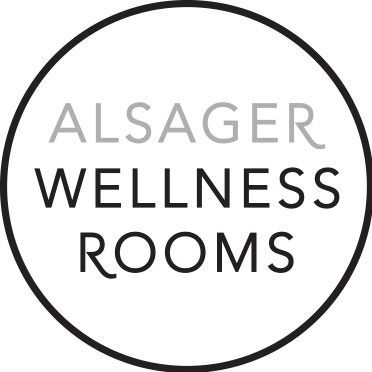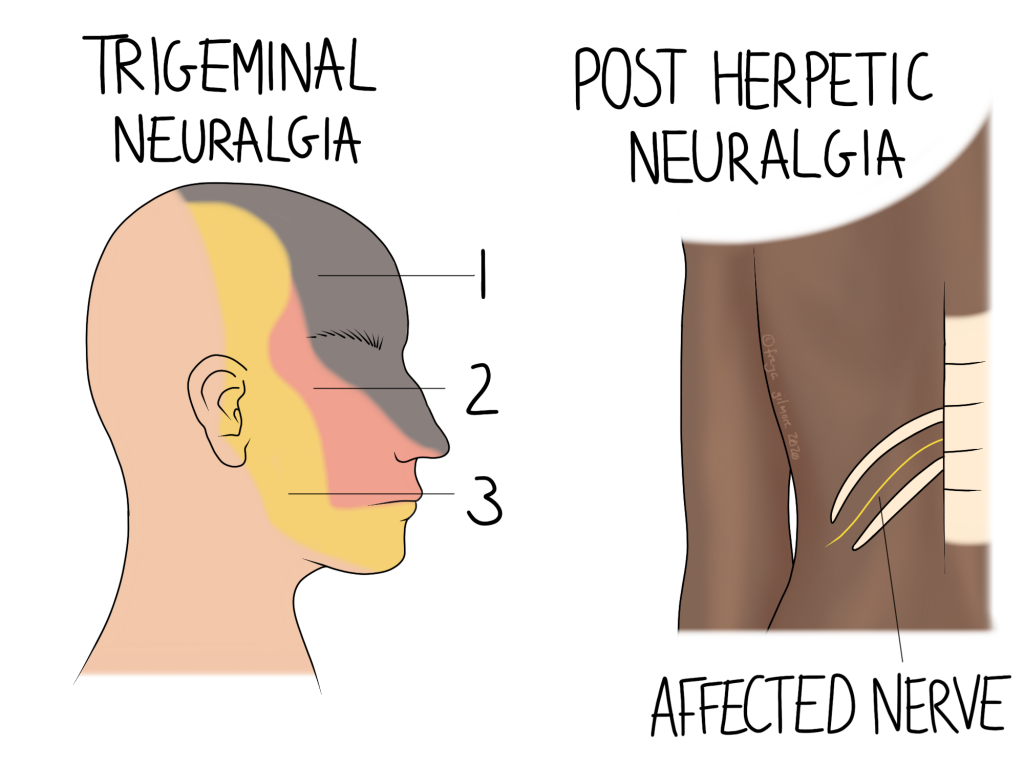Neuralgia literally means “nerve pain”. Two common forms are trigeminal neuralgia, affecting the face, and post-herpetic neuralgia following shingles.

Symptoms of Neuralgia
When a nerve is irritated, it can cause a sharp or shooting pain, along with pins and needles, numbness, or weakness over the same area. The pain often directly follows the nerve, to the extent that it would be possible to draw a defined line of pain on the skin that would correspond with the course of the nerve.
Alongside the sharper pain, the nerve may also become sensitised. This can mean that either pain is magnified (hyperalgesia), or non-painful stimuli become painful (allodynia).
Trigeminal Neuralgia
The Trigeminal nerve is a nerve that supplies the face. It splits into three branches on either side, as illustrated above. Usually only one branch is affected at once, causing severe pain into the area that the nerve supplies.
Most cases are due to unknown causes, so imaging may not give an answer for the pain, however it can be useful to rule out serious problems. Sometimes the nerve may be trapped around the point where it exits the skull, and some people may find that treatment around this area can give them some relief. However an multidisciplinary approach to provide comfort with medication may be more appropriate.
Post-Herpetic Neuralgia
Shingles is caused by a herpes virus, hence the term “post-herpetic” for symptoms following an episode.
The rash often follows a nerve, as the virus lays dormant in the nervous system after the initial infection (which may be in the form of chickenpox in childhood). This can be particularly obvious if the torso is affected, as each nerve runs between a rib. The significance here is that the same nerve can be affected by post-herpetic neuralgia. The rash itself is uncomfortable, so the pain of neuralgia may initially be dismissed as pain from the rash, however the pain remains once the rash has resolved.
Cases tend to resolve on their own within 6-12 months, but occasionally they can take much longer. In any case, nerve desensitisation techniques can be particularly useful to manage the symptoms in the meantime.
Osteopathic Management
When a nerve is irritated in this way, it can become sensitised. Reducing sensitivity is therefore a key part to feeling better. Your osteopath can use techniques to calm down the local neurology, such as graduated exposure to stimuli that irritate the nerve. For example, if your neuralgia causes pain when something innocuous, such as clothing, touches the area, we can slowly build up that light touch to make it more manageable again.
For cases like the two above where the cause is likely out of our remit, our focus is on symptomatic relief. Some people with trigeminal neuralgia respond well to work on the neck and head as well as the desensitisation techniques. As post-herpetic neuralgia does not have a mechanical cause, treatment to the site of pain is typically the focus.
Contact us on 07775931609 to make an appointment in Alsager for your neuralgia


